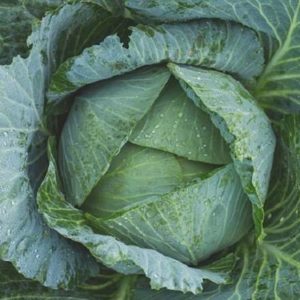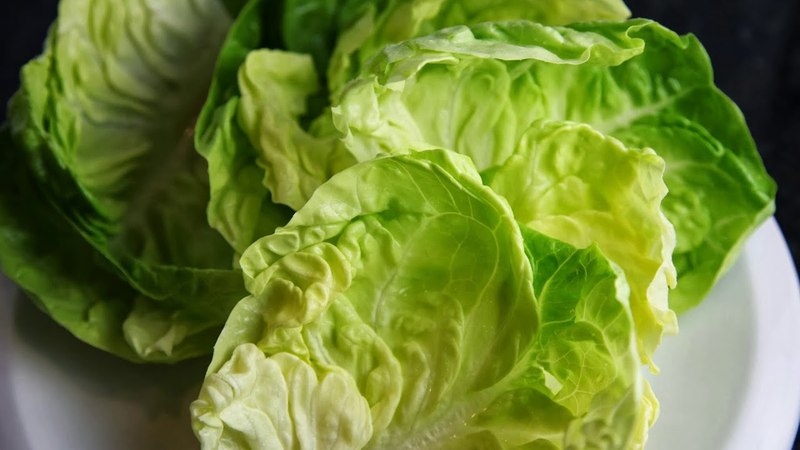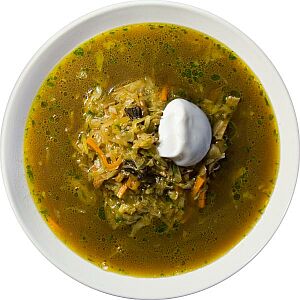How to make green cabbage leaves for the winter
Cabbage is consumed fresh, fried, stewed and boiled. For the winter it is fermented, salted and pickled. Heads of cabbage are used to prepare various dishes. The top green leaves from the heads of cabbage and the leaves growing around it are usually thrown away or given to livestock feed. And few people know that these leaves are used to prepare a traditional dish of Russian cuisine - gray cabbage soup. But you won't be able to cook them without a prepared crumb. Tiny - this is the basis of gray cabbage soup. We will talk about how to cook it further.
The content of the article
Cabbage leaf pickling technology
 Tiny, grunt or shchanitsa are pickled, finely chopped green leaves that grow around a cabbage head, or the top green leaves from a head of cabbage.
Tiny, grunt or shchanitsa are pickled, finely chopped green leaves that grow around a cabbage head, or the top green leaves from a head of cabbage.
Only cabbage soup is prepared from kroshev, which are called black cabbage soup, gray cabbage soup, green cabbage soup or kroshev cabbage soup. Unlike cabbage soup, they are more nourishing, have a rich taste, with a special sourness.
The composition of dark cabbage leaves differs from white ones. They contain less sugar, which makes them harder to ferment. To enhance the fermentation process, rye crackers or rye flour are added to the crumb. Carrots are also added to cabbage.
Council. Grated carrots will give the crumb an unpleasant flavor. Therefore, it is better to chop it with a knife or a chopper (a wide semicircular knife for chopping cabbage).
Crochet recipes
It's easy to make crumbs. For harvesting, cabbage leaves that grow around the head (they are called gray) and the top green leaves from the head are used. For cooking, take either those or others. The color of the finished crochet depends on the quality of the sheet.
Council. Experienced housewives recommend using only the leaves around the head, so that the crumb has a brighter taste with sourness, a rich aroma and a pleasant color.
Fresh, firm leaves are selected, without damage, spots and dry edges. They are washed well.
Some housewives scald the leaves with boiling water to speed up the process. This is not worth doing, as it can negatively affect the quality of the product.
Important! Crochet leaves are harvested at the end of July and August.
 It is recommended to ferment the leaves in a tall and wide enamel saucepan. It must be intact, without chips, so that the product does not react with metal.
It is recommended to ferment the leaves in a tall and wide enamel saucepan. It must be intact, without chips, so that the product does not react with metal.
Previously, cabbage leaves were chopped in oak or birch troughs or in tubs with a special cut. Now they cook crumbly with a large sharp knife.
The leaves are stacked and cut into thin strips. The strips are cut into squares. Then the squares are chopped as small as possible.
Chopped cabbage is put into a container, carrots, rye flour are added, and salt is sprinkled.
A plate is placed on the finished mass, and oppression is placed on it. The container is removed in a warm (optimal temperature is from +20 to + 25 ° C), a dark place where direct sunlight will not fall.
Fermentation of cabbage crumb
On the first day, juice is released from the crumb. It must completely cover the entire mass. If there is little juice, add water.
Council. To prevent the product spoiled, during fermentation, make sure that the juice completely covers the cabbage.
Fermentation lasts 5-7 days. During this period, a light foam appears on the surface, which must be removed.
 Every day the oppression is removed from the leaves, and the mass pierced with a wooden skewer to the bottom to release accumulated gases. Leaves are pierced over the entire area, every 3-5 cm.
Every day the oppression is removed from the leaves, and the mass pierced with a wooden skewer to the bottom to release accumulated gases. Leaves are pierced over the entire area, every 3-5 cm.
If the cabbage is not pierced, then the finished crumb will taste bitter.
After 5-7 days, foam on the surface ceases to stand out, the fermentation process stops, crumbly acquires a sour taste and a green-gray color. The product is ready.
Some recipes recommend a fermentation process and then salt the leaves. But in this case, they can become covered with mucus and deteriorate. Therefore, salt crumbs immediately, and strengthen the fermentation by adding rye flour or crackers.
Store the finished crumb in the cellar, refrigerator or freezer. It is recommended to rinse and squeeze before cooking cabbage soup.
Detailed step by step recipes
In different regions of Russia, green cabbage leaves are cooked in different ways for the winter. Somewhere add rye flour or crackers, somewhere - white cabbage and carrots.
Tiny cabbage

For a traditional sauerkraut recipe you will need:
- green leaves - 2 kg;
- salt - 3 tbsp. l.
How to ferment gray cabbage for the winter:
- Cabbage leaves are cut into several pieces and placed in a wooden trough or saucepan. Crushed with a cut.
- Sprinkle with salt and chop again, mix.
- Place in a fermentation vessel. Cover with a plate on which oppression is installed. Leave for 5-6 days at room temperature.
- The cabbage is stirred daily to release the bitterness and skim off.
The finished product is stored in a basement or refrigerator.
Gray cabbage for the winter
To improve the fermentation process, rye flour or rye crackers are added to the crumb.
Main ingredients for cooking:
- green cabbage leaves - 3 kg;
- rye flour - 3-4 tbsp. l. (can be replaced with several pieces of dry rye bread);
- salt.
Salt is added at the rate of 200 g per 10 kg of product.
Cooking steps:
- Large thickenings are cut out from the leaves, cut into strips. The strips are crushed into squares. The squares are chopped as small as possible.
- Chopped cabbage is put into a cup, salted and kneaded thoroughly, pressing lightly.
- Leaves are spread in a fermentation container, sprinkled with flour or shifted with breadcrumbs.
- A plate is placed on the cabbage, on which the load is placed.
- Put away in a dark, warm place.
- If during the day an insufficient amount of juice is released from the cabbage, then add water so that it covers the crushed leaves with two fingers.
- Fermentation lasts 5-7 days. Every day, it is necessary to remove the foam from the cabbage and pierce it to release the accumulated gases.
- When the foam stops appearing, the product is ready.
The finished crumb is stored in the cellar, refrigerator or frozen in the freezer.
Green cabbage soup recipe
This is a recipe for crumbling with brine.
Components:
- green leaves - 2 kg;
- carrots - 250 g;
- rye flour - 30 g;
- sugar - 2 tbsp. l .;
- salt - 2 tbsp. l .;
- water 1.5 l;
- allspice peas - 3 pcs.;
- bay leaf - 2 pcs.
Step by step cooking:
- Cabbage leaves are finely chopped, carrots are grated on a coarse grater.
- Brine is prepared: salt, sugar, peppercorns and bay leaves are added to hot water. Bring to a boil and remove from heat. Leave to cool.
- A handful of rye flour is poured into the bottom of the can. Vegetables are laid in layers, sprinkled with flour.
- Pour vegetables with cooled brine. The jar is placed in a deep plate and left in a warm place. Juice will spill out of the jar during fermentation.
- After 3 days, the product is transferred to a cool place.
- After 7 days, you can cook cabbage soup from kroshev.
Tiny with white cabbage
Some housewives not only ferment the cabbage with leaves, but also add white cabbage to the crumbly.
Ingredients:
- green cabbage leaves - 3 kg;
- salt - 70 g;
- rye flour - 3-4 tbsp. l. with a slide;
- carrots to taste;
- white cabbage - 1 small fork.
Cooking algorithm:
- Thick and coarse parts are cut out from green leaves, finely chopped. Cut cabbage and carrots into small pieces.
- At the bottom of an enamel pot or tank, pour 2 tbsp. l. rye flour. Layers of sliced leaves, carrots and cabbage, sprinkle with salt and rye flour.
- The mass is rubbed with hands so that the cabbage gives juice. Cover with a plate and put oppression on it.
- If after a day the cabbage has given little juice, add water so that the liquid completely covers the entire mass.
- Leave for 4-7 days at room temperature for fermentation. Cabbage is pierced daily to release the bitterness, and the resulting foam is removed.
- When the product is ready, they are laid out in glass jars or plastic bags. Banks are stored in the refrigerator, bags are frozen.
For convenience, freeze one serving in a bag.
It is interesting:
Cooking amazing sauerkraut with grapes according to the best recipes.
How to cook pelustka cabbage according to the most delicious recipes.
Step-by-step recipes for the winter: how to properly ferment cabbage in a bucket.
Novgorod recipe
According to this recipe, krochevo is harvested in the Novgorod region. The originality of this dish lies in its special sourness.
For cooking, use only the leaves that grow around the head of cabbage, carrots and salt.
How to cook:
- The leaves are washed and some are put into a barrel. Peeled carrots are added, the amount to taste.
- Leaves and carrots are crumbled. The crushed mass is transferred to a basin, salt is added to taste and rubbed with hands.
- Salt is added about 2%. For example, if the crochet is 10 kg, then the salt is used 200 g.
- The mixture, grated in a bowl, tastes like a fresh cabbage salad.
- From the basin, the mass is transferred to an enamel pan or tank, in which the product will ferment.
- Then a new portion of leaves and carrots is poured into the barrel, crumbled with a cut. Transferred to a basin, salt and grind, put into a tank. Repeat until the product runs out.
- Shredded cabbage is covered with a lid that is smaller in diameter than the tank. Heavy oppression is placed on it. Place in a dark, cool place for 5-7 days.
- Juice appears on the first day. If not enough, add water.
- The mass is pierced daily, releasing the bitterness, and the foam is removed.
- When the product stops fermenting, it is transferred to clean glass jars and closed with nylon lids.
Store the product in a cellar, basement or refrigerator.
Shchi from kroshev
Previously, cabbage soup was cooked in a Russian oven. The cast iron with crumbs, onions, carrots, potatoes and meat was covered with a lid and put in the oven in the morning. There the cabbage soup was prepared before lunch.
Gray cabbage soup is a traditional winter dish, but if it remained crumbly, then they cooked them in the summer. Cooked without meat, served hot or cold. This dish was more like okroshka. Lean cabbage soup was also used by those who wanted to lose weight.
Cabbage soup in a pressure cooker
When cooking cabbage soup in a pressure cooker, conditions are created that are similar to cooking gray cabbage soup in a Russian oven.
To cook cabbage soup, you will need: crumbly, water, meat, onions, carrots, bay leaves, potatoes and parsley.
Step by step cooking:
- Pour ice cream with cold water for 2-3 minutes. Squeeze out and put in a pressure cooker.
- Add water and put on high heat to activate the valve. Then the fire is reduced and boiled for 4 hours. About 4 liters of water are added to 400 g of crochet.
- Then cool the lid of the pressure cooker with a stream of cold water and remove. Add chopped carrots and parsley, a piece of meat, whole potatoes, bay leaves. Cover tightly with a lid, cook for 1.5 hours.
- After the lid has cooled, remove it. Take out the potatoes, knead them in mashed potatoes, adding a little broth.
- The mashed potatoes are sent back to the pan, mixed.
Ready-made cabbage soup is served with sour cream or cream, garlic and herbs are added.
Crochet cabbage soup in a saucepan
If you don't have a pressure cooker, you can cook cabbage soup in a saucepan.
Main ingredients: meat, crumb, potatoes, carrots, parsley, bay leaves and water.
Cooking cabbage soup:
- A little water is added to a pan with crumb, simmer in the oven over low heat for 3-4 hours or on the stove.
- In another saucepan, cook the meat broth over low heat.
- When the meat is almost ready, chopped carrots and parsley, bay leaves and whole potatoes are added to the broth.
- The finished crumb is mixed with broth, boiled for 30-40 minutes.
- Then the meat and potatoes are removed from the broth. Mashed potatoes with a little broth. Bones are removed from the meat and disassembled into fibers. Add again to the broth, mix.
Cabbage soup is served with sour cream, garlic and herbs are added to taste.
Storage tips and tricks
To store the finished product, use wooden barrels, glass jars, plastic containers or plastic bags.
Council. For a longer storage period, sterilize the glass jars beforehand.
Store crumbs in a cellar or basement at temperatures from -1 to + 4 ° C. In a wooden barrel, the shelf life of the product is 7-9 months, in glass jars - two weeks.
In the apartment, they are stored in glass jars in the refrigerator or on the balcony. To keep it crispy, it must be completely covered in juice during storage.
For longer storage, crumbs are frozen in plastic containers or plastic bags. The frozen product does not lose its quality; it can be stored for up to nine months.
Conclusion
Kroshevo is a traditional Russian dish. For its preparation, use the green leaves growing around the head, and the top leaves from the head. They are finely crushed with a special cut or knife and fermented. To enhance the fermentation process, rye flour or crackers are added to the crumb; carrots and white cabbage are added for taste.
Use the finished product only for the preparation of gray cabbage soup. Unlike sauerkraut cabbage soup, they are more nourishing, have a rich taste with a special sourness. Store crumbly in a cellar, refrigerator or freezer.